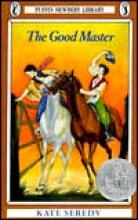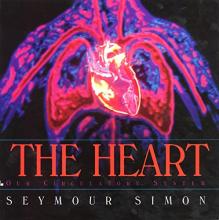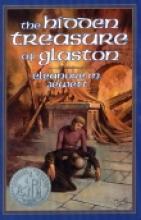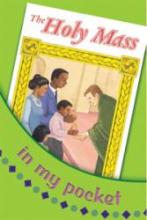No name
The Good Master
Throughout the story are beautiful vignettes on the wholesome Catholic life of the people, feast day celebrations, and traditions. There are also several Hungarian folk tales inspiringly told by the shepherds and an old miller. Kate finds a place to bloom and is able to give some back in return. She starts a school for Jancsi and the shepherds, teaching them to read. In the end her father, a school teacher comes to join them in the country and the improvement of his daughter overwhelms him. They convince him to stay in the country and reap the benefits of the the good life they have there.
There is much to be recommended in this story. The example of the "Good Master," Kate's uncle Marton, is the strongest in the story. His treatment of Kate is analogous to our "Good Master" in heaven. The story allows for much discussion of a father's love and the discipline involved in it. It is also a beautiful story to show the universality of the Church as we see the Faith practiced in another culture.
The story is beautifully written and illustrated. If you're lucky enough to find a hard cover version from the Sixties, you have some bonus color portraits of Kate and Jancsi, which as a child, I never tired of gazing over. The illustrations of authentic Hungarian costumes and folk art are a great addition to the story.
Recommended for grade 4+ (We read it to our young children, ages 3-8, and they loved it.)
The Harp and the Laurel Wreath
Her choice of poems is flawless. She has included all those listed in Designing Your Own Classical Curriculum, and leans heavily on the classics, as you would expect (Shakespeare, Browning, Keats, Longfellow), but rounds it out with a variety of other authors and poems (including my mother's favorite, High Flight: "Oh, I have slipped the surly bonds of earth....") In addition to poetry, there are "Selections to Memorize": great works of prose such as Lincoln's Second Inaugural Address and Patrick Henry's famous oration. and "Selections for Dictation". She's organized the book according to the stages in the classical curriculum: Grammatical, Dialectical, or Rhetorical. There's even a section for "The Early Years", with lots of favorites from Robert Louis Stevenson and others, as well as a page of Bible verses. And to make this section even more appealing to the littlest homeschoolers, the font is larger there than in the rest of the book.
If this book is a starting point for you, then you'll want to add additional anthologies. To really infuse a love of poetry in your children, and to have a broad enough range of poems for reading aloud as well as memorization, you need work by children's poets such as Dorothy Aldis and Christina Rossetti. In addition, consider purchasing a beautifully illustrated version of Stevenson's Leaves from a Child's Garden of Verses, such as the one by Donna Green (even though many of the poems are reprinted in The Harp and Laurel Wreath), as well as a more eclectic volume such as "Talking Like the Rain" (X. J. Kennedy and Dorothy M. Kennedy).
But even if you already have dozens of volumes of poetry, you need this book. Berquist understands the true purpose of education, she knows what homeschooling moms need, and she knows how to put it all together in an attractive package. Start building another shelf!
There's a rather serious typographical error on page 128 of the first edition which I'd like to bring to your attention. Under The Preamble to the Constitution the phrase
UPDATE: (2/23/2000) This error has been corrected in the latest reprinting.
The Heart
This is a fascinating and colorful look at the heart and the amazing job it performs. Computer-enhanced photos are used to illustrate the heart and the blood vessels while magnified images give us a close-up look at the blood. Also included are simpler illustrations showing the chambers of the heart, it's valves and arteries and the general make-up of arteries and veins and their valves. The text is simple enough to be understood by fairly young children (particularly as a read-aloud) but is written in such a way as to capture the awe and mystery of how our body works. It covers quite a bit of material in a fairly in-depth fashion - the basic workings and function of the heart, the various components of the blood, the various types and functions of the blood vessels, the basic path of the blood through the body, how the lungs work within the cardiovascular system, the role of white blood cells and some of the problems that people develop in their blood's circulatory system. An impressive, engaging and informative book.
The Hidden Treasure of Glaston
Life gets more interesting when Hugh teams up with Dickon, a young oblate at the monastery, to investigate secret underground treasure caves. A mystery unfolds envolving the monastery, King Arthur, Joseph of Arimathea and the Holy Grail.
How neat to read a Catholic adventure story for children! While reading an engrossing, fast paced story, they are also given a positive impression of piety and monastic life and the importance of amending one's life (the side-plot regarding his father which ends happily).
I also like the fact that the book includes "a word to those who like to ask of a story, especially one with an historical background, 'Is it true?'" The story, as much as possible, is rooted in historical truths. Although I have not read it yet, The Flowering Hawthorn (published by Neumann Press) appears to cover some of the historical background that this story is based on and might make an interesting follow-up book.
The Hidden Treasure of Glaston is a Newbery Honor book from 1946. There are some similarities to The Door in the Wall by Marguerite de Angeli, but I think this book is more interesting and fast-paced.
This book was donated for review by Bethlehem Books.
The History of the Papacy
This CD ROM provides a complete and orthodox look at the History of the Papacy in a professional and attractive interactive format. Each of the Popes from St. Peter through Pope John Paul II are presented with a short biography (from one or two paragraphs to one or two pages each - the text is taken from The Popes Through the Ages by Joseph S. Brusher, S.J. - 1959), numerous images (portraits, coins, commemorative stamps, statuary) and the coat of arms. In addition, several video clips each are offered for most of the Popes of the 20th century (most are without audio) and separate audio clips are offered for several 20th century popes as well.
The history presented is very Catholic and very balanced (for example, both St. Pius X and Pope John Paul II are greatly admired and favorably presented). Vatican II is presented as orthodox, but frequently misinterpreted and even abused in its application.
An appendix includes several histories. First - a history of the Crusades. This text is taken from the Catholic Encyclopedia (1908) and includes several traditional images. Second - a history of the Ecumenical Councils with a brief description of each, illustrations of a number of the councils and a video clip from Vatican II. Finally - a listing of the anti-Popes (false claimants to the Papacy).
This is a really nice resource and history supplement. It's nice to have one that is so beautiful and orthodox.
The Holy Bible: Douay Rheims Version
The Douay Rheims Bible is supposed to be the most accurate, Catholic, translation of the Bible available in the English language. The Old Testament was translated into English in 1609 and the New Testament in 1582 and revised in its entirety (and "diligently] compared with the Latin Vulgate") by Bishop Richard Challoner from 1749-1752. Although the some of the language would be considered archaic today (lots of "thees" and "thous") but it really is beautiful. Although you will probably want a more modern translation as well, the Douay Rheims is especially good for memorizing passages and as a reference for points (and discussions) in which accuracy is especially important. TAN Books also publishes the Douay New Testament in a less expensive edition.
Sample passages: Genesis 1:1-3In the beginning God created heaven, and earth. And the earth was void and empty, and darkness was upon the face of the deep; and the spirit of God moved over the waters. And God said: Be light made. And light was made.
Psalm 26: 1-2The Lord is my light and my salvation, whom shall I fear? The Lord is the protector of my life: of whom shall I be afraid? Whilst the wicked draw near against me, to eat my flesh. My enemies that trouble me, have themselves been weakened, and have fallen.
John 1: 1-5In the beginning was the Word, and the Word was with God, and the Word was God. The same was in the beginning with God. All things were made by him: and without him was made nothing that was made. In him was life, and the life was the light of men. And the light shineth in darkness, and the darkness did not comprehend it.
Imprimatur 1899
The Holy Mass in My Pocket
The Holy Twins: Benedict and Scholastica
Monastic life and St. Benedict's rule are presented in a gentle and very positive manner. The end of the story has a detailed explanation of the history of the rule of St. Benedict. Here is a nice little sampling: "Many people who are not monks or nuns have found that Benedict's Rule offers good, practical advice and spiritual counsel for getting along with others in a family, on the job, or in a church community." This page is followed by one illustrating some examples from his Rule.
The House of Sixty Fathers
The story is beautiful and thoughtful and gives a picture of life in an oft-forgotten portion of the World War II "drama". We Americans tend to focus on the stories of Europe and the Holocaust. Appropriate for ages ten and up.









